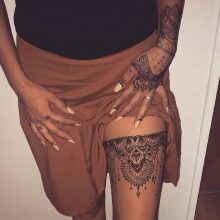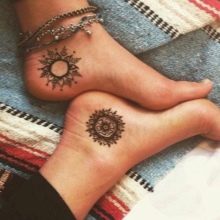Henna drawings on the leg

Temporary tattoos on the body are a great option for those who are not ready for drastic changes. That is why henna drawings have become so popular: this is a great way of transformation for a few days, on a special occasion or just in the mood. And you can choose a suitable place, for example, a henna tattoo on the leg looks amazingly beautiful.
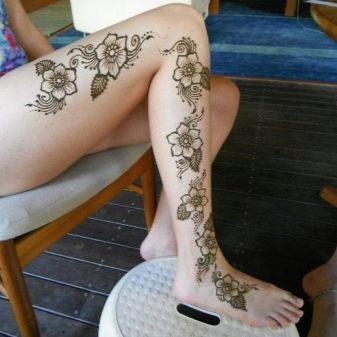
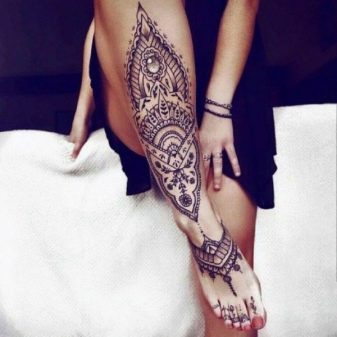
Peculiarities
Henna tattoos are called mehendi, this is Indian body painting. But being bound to a specific region indicates the origin of the method, not its distribution. It is in the West that such oriental traditions have taken root very much. The drawing will be temporary, in a couple of weeks it will come off. In India, such images are applied to the skin of brides: it has become a tradition, and it is actually beautiful. It is also believed that mehendi can attract good luck.
Those who decide to apply such a temporary image often associate it with the fulfillment of a wish. They are not just applied for beauty, but they also make plans, and the tattoo becomes a visualization of good luck. And a tattoo on a leg is a desire to take some bold step or go in a different direction. This often happens on a subconscious level.
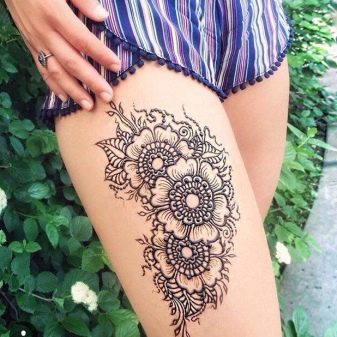
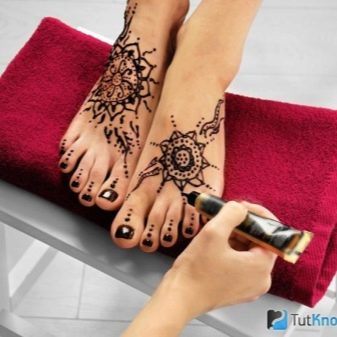
Mehendi looks very beautiful in summer on tanned skin. And when else to show off with a pattern on the leg, if not in the summer. You can find a suitable sketch on the Internet, think it over yourself or trust the master. As a rule, sketches are chosen light ones, because very complex drawings will be a shame, because the time to wear them is limited.
Which girls are suitable for a henna tattoo on the leg:
- tanned, bright, active;
- self-confident (you really need to be able to wear a tattoo);
- ready for minimal tattoo care;
- those who want to make a kind of "fitting" before a permanent tattoo.
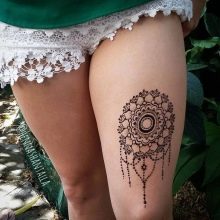

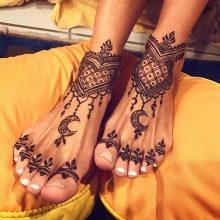
There are no age restrictions: the stereotype that such a tattoo looks appropriate only on young girls has long been in the past. For summer bows (especially on vacation), this is a great addition. Especially if it was done not somehow, but professionally.
Views and sketches
It is easy to get confused in the choice of drawings, because there are really a lot of them. And it’s just as easy to know what might be behind such a choice.
dream Catcher
By the way, this beautiful and simple symbol is considered a way to get rid of insomnia... If you paint a small pattern on the inside of your ankle, you can fix this problem. At least that's what they say, and on the forums you can read more than one review of how the dream improved.
And even from nightmares, they say, such a simple action helps.
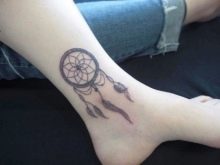


Feathers
The drawing will be appropriate on any part of the leg. He speaks of the bearer's patience, as well as his optimism, courage and even wisdom. Such a drawing is also preferred by those who write: it does not matter, poetry or just texts. It is symbolic, beautiful and subtle.
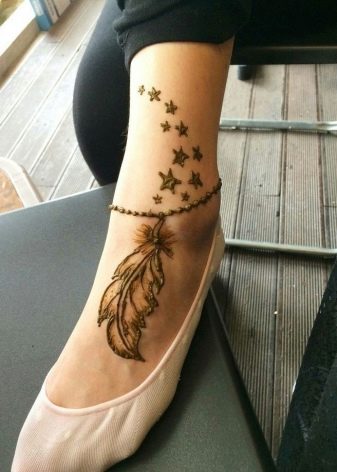
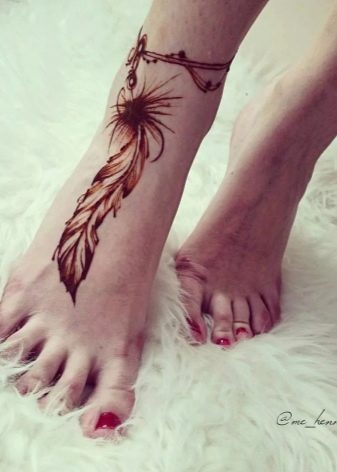
Bracelets
They are drawn for good luck. It is believed that this symbol is able to attract success, to make the desired close to receiving. Plus it looks very sexy. On female legs it looks like a sensual element with an oriental flavor.
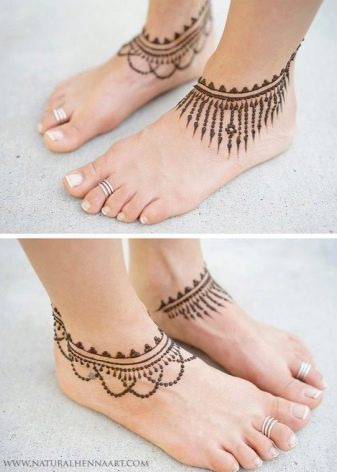
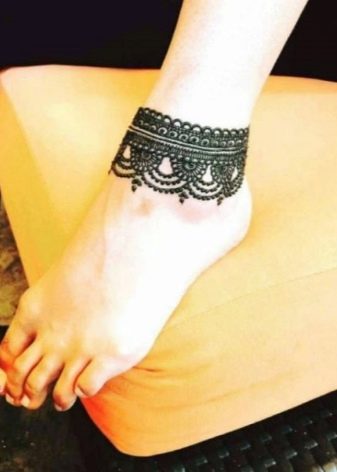
Stars
Stars in all types, quantities and sizes demonstrate a craving for professional growth, self-realization, creative take-off... Sometimes they help you feel harmony, pull yourself out of everyday worries.
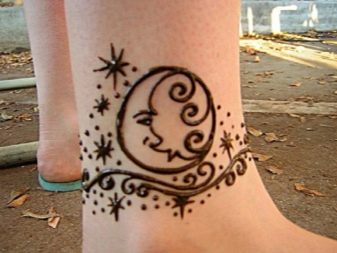
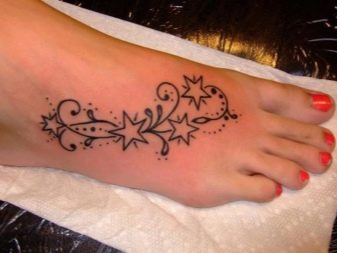
Lotus
In the East, this plant is considered sacred, it is associated with wisdom and the feminine principle. Therefore, they draw it in order to attract love into their life (or to understand a difficult love situation).
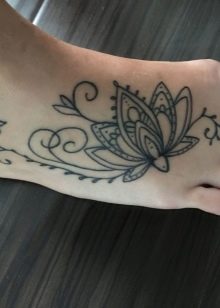

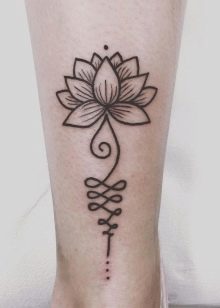
Garter
The stocking garter is a pretty bold pattern that sits on the top of the leg. It symbolizes despair and even courage. True, the readiness for risky adventures is also read from this image.
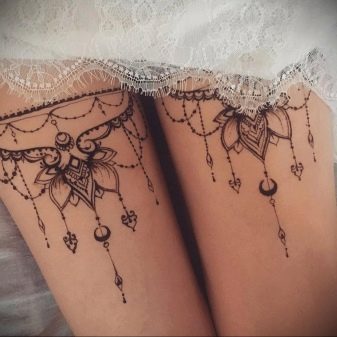
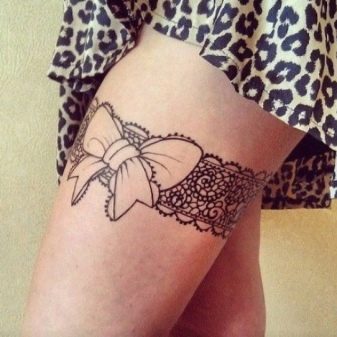
Other
The rhombus speaks of the emotionality and susceptibility of the owner of the tattoo, as well as sensitivity, vulnerability. The triangle is drawn by very determined women. It is more difficult to apply images of animals, novice craftsmen may not be able to cope, but always the beast is an association with the person who chose the tattoo. A bird can talk about freedom and love of travel, a panther - about willpower and following instincts, a cat - about cunning and a desire for independence. Everything can be accompanied by framing patterns.

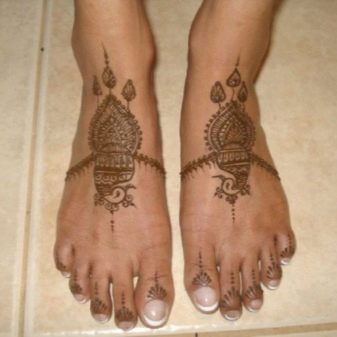
Mehendi styles
There are several recognizable styles, each of which makes sense to study or at least take a closer look at it.
In what styles can henna tattoos be performed:
- Arab: very noticeable, expressive, bright, because there are many floral motifs in it, the pattern is very rich, there is no talk of minimalism;
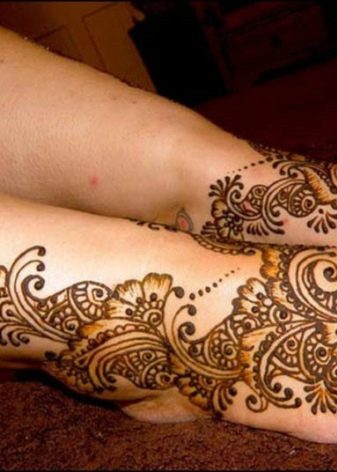
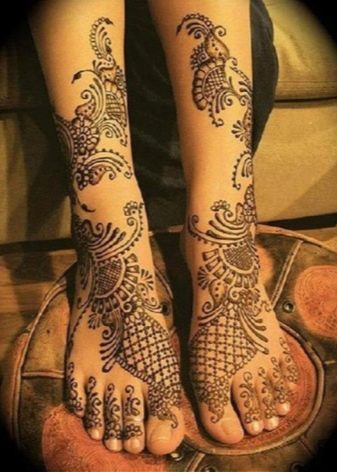
- Indian: the most complex pattern, and this is no exaggeration, since it consists of many complex elements, each detail is meaningful and not accidental;
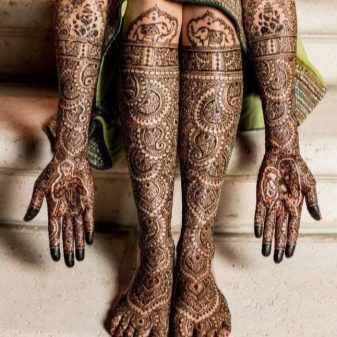
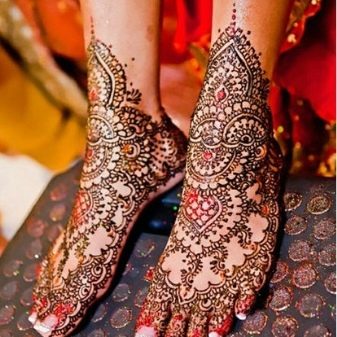
- African: it can be recognized by a large number of clear stripes, and they are all aligned with the stop line;
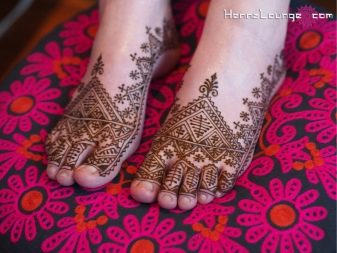
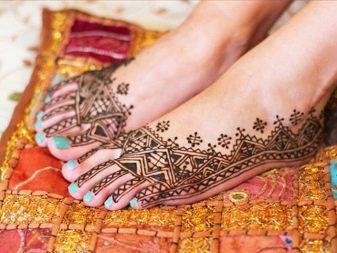
- Asiatic: it is a compromise style for those who cannot choose which motives to use;
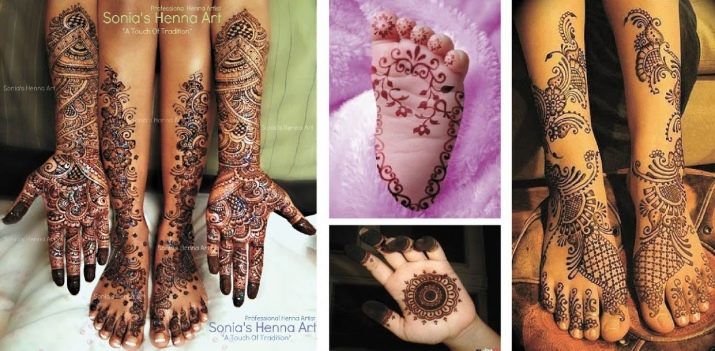
- European (Western): in fact, it is a "cocktail" of all the indicated styles, their free mix, an intersection based on aestheticism and harmony.

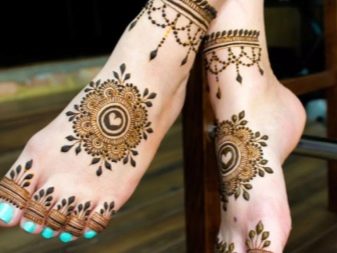
It is not always necessary to strictly follow the style.
Some patterns turn out to be fantasy, as if created from the depths of their subconsciousness, some previously seen examples, etc. If it looks beautiful and consistent, why not.
Henna selection
It is worth figuring out what henna is. These are leaves collected from the lawsonia shrub. They are dried and then crushed thoroughly to obtain a powder. And so it gives coloring properties. Yes, not the most persistent, but based on natural raw materials.Probably everyone knows that henna is used not only for tattoos: it is used to dye hair and eyebrows, make masks and medical and cosmetic compositions on its basis. True, different types of henna are used for this.
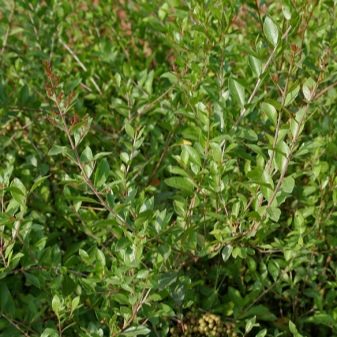
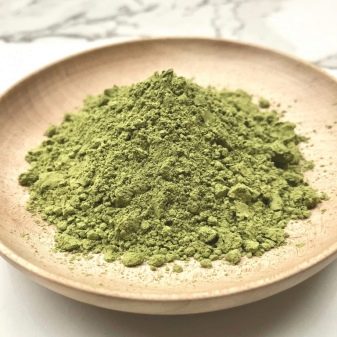
To create a biotat (this is how henna and mehendi drawings are often called), you need to choose a composition designed specifically for drawing on the skin. The natural composition will be brown in color, but if you can find white, black and even multi-colored paste, then you should not be surprised. Such variations are also used for the needs of beauty.
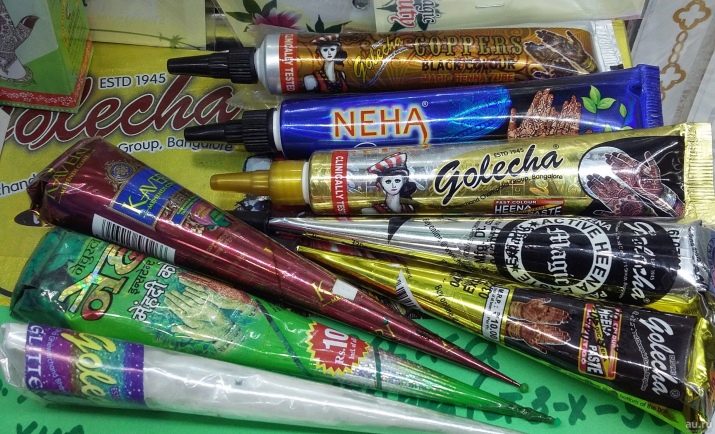
Let's consider different types of henna.
- White... It is very popular for body painting. It looks delicate and light, does not have any bright predominant color, it is used as a basis. In nature, white henna, of course, does not exist, that is, the powder will contain a synthetic component. But since the mixture does not penetrate deep under the skin, this should not cause much concern. The pattern, however, will only last a few hours.
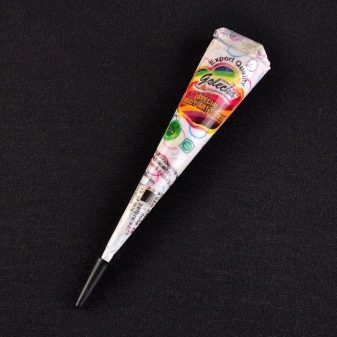
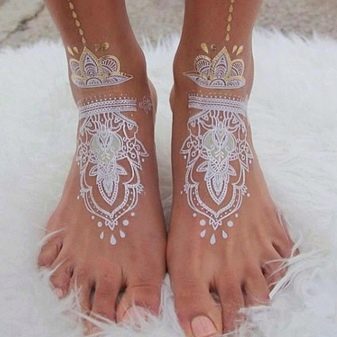
- Black... This product contains natural henna and the same chemical additives, or, to be more precise, paraphenyldiamine. And now it is no longer so innocent, an allergic reaction from the skin is not excluded. Sometimes such beauty procedures end with a burn. Therefore, it is possible to recommend black paste, but in a very limited amount and with a preliminary test reaction on the skin.
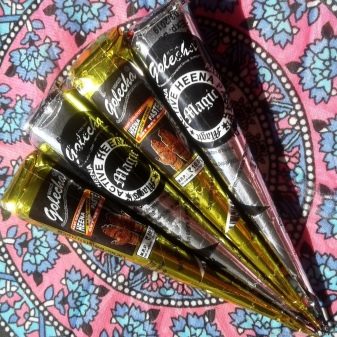
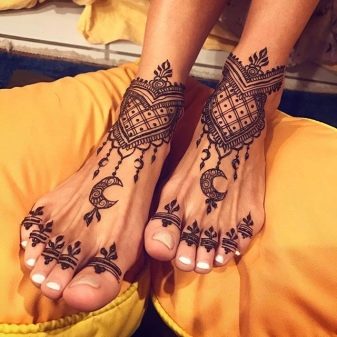
- Multicolored... Red and orange, blue and green - and such henna can be found on sale. And then there is paint with glitters, which is very reminiscent of a flash tattoo. Of course, this is not a natural composition, there is chemistry here.
If there is no allergy and everything is done according to the instructions, there is nothing to be afraid of.


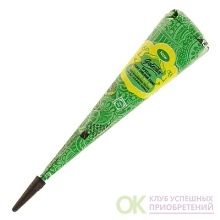
But the priority choice, of course, will be natural henna - an environmentally friendly product. Such a paste is always brown, quite rich in color. Sometimes it may have a reddish tint. And the final color on a person's body will depend on the natural tone of his skin. It is safe henna that does not cause side reactions. To some extent, such a powder is even good for the skin. You can buy powder from Indian manufacturers, just read the recommendations in advance. The most famous sellers on hearing - Neha, Kaveri etc.
It is also worth noting that henna can be produced in tubes, in powders, in cones... Pasta in tubes is probably the most practical one, it also has a longer shelf life due to the tightness of the package. Even a novice master can easily cope with a tube, even if the consistency in it at first may seem thin to him. But the material is easily applied to the skin, dries quickly. The test reaction is, of course, worth it.

Henna in a cone is also convenient for application, and this option is also considered very economical. For beginners, it is suitable, and the composition in it will be stored for at least 2 months... True, a long shelf life always speaks of preservatives in the composition, which can hardly be called an advantage of the product.
The material in powder is the base, that is, it will have to be turned into a liquid, kneaded by yourself... And this has its advantages: you will definitely be sure of the quality of the consistency, and also that there are no preservatives here. The masters themselves even add essential oils to the composition, which makes the powder a useful cosmetic. Such a remedy has no side effects, and it will last for about 2 weeks, and sometimes it takes up to a month.
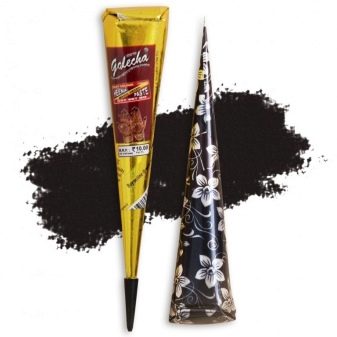
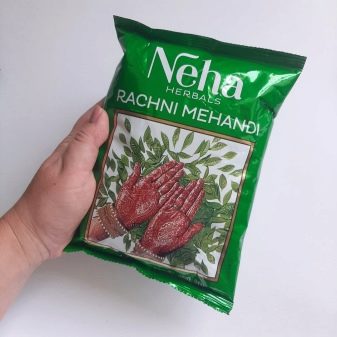
Accommodation options
Mehendi can be called skin painting using natural herbal powder. And someone manages to turn it into small masterpieces. In addition to the fact that henna painting is considered almost an art, it is also a tradition, that is, symbolism.
It doesn't really matter where the tattoo will be placed on the leg.
Localization of the henna pattern on the leg:
- right leg: people who are looking for themselves, are in search of the meaning of life, a favorite thing, a loved one prefer to draw there;

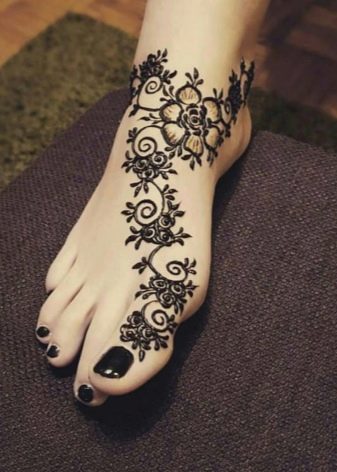
- left leg: and this is the place where purposeful people paint with henna, precisely knowing their goal and wanting to move towards it with all their agility;

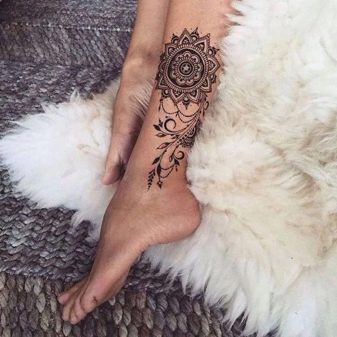
- back of the thigh: temptation, temptation, study of one's own sensuality is clearly guessed in the choice of this zone;
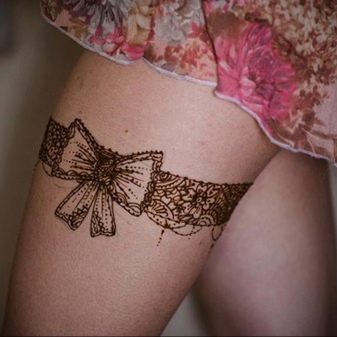
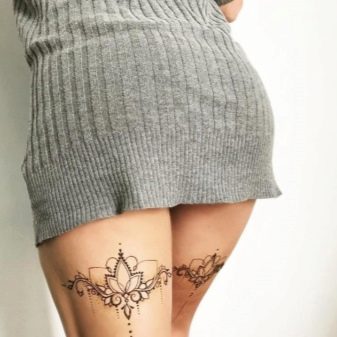
- sole: they say that people with such a choice of place are inherent in selfishness and dissatisfaction with the environment or events in their lives;
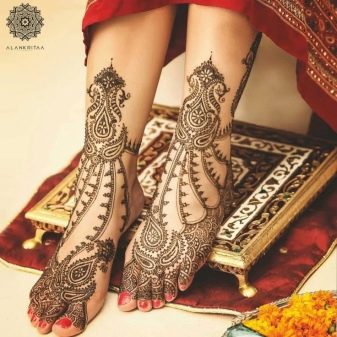
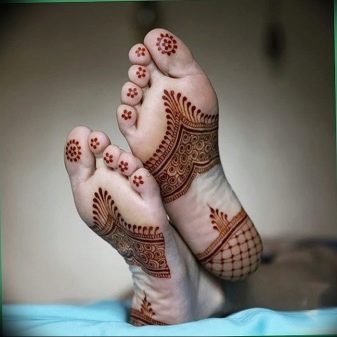
- on the shins get a tattoo by those who decided on something risky or simply difficult, and are looking for support;
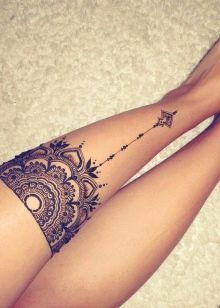
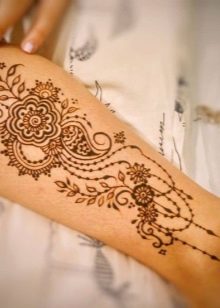
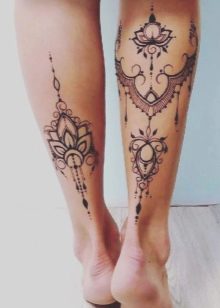
- ankle henna tattoo can mean the desire to be open to the world, to be ready to accept its challenges;
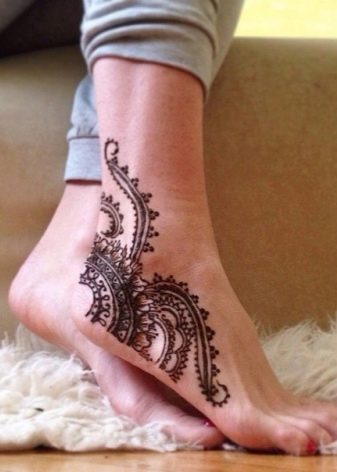
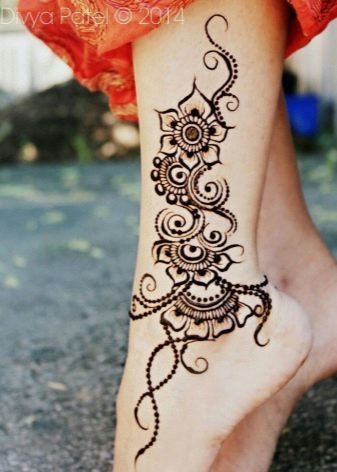
- on the ankle mehendi means the need for protection, which, nevertheless, does not contradict the desire to be bright, in sight;
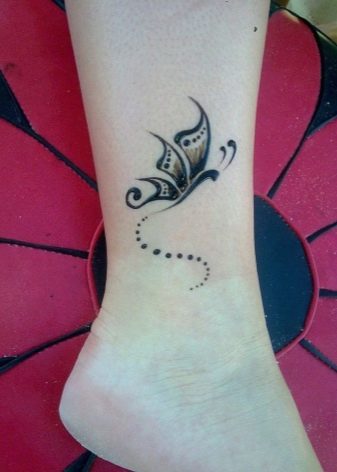
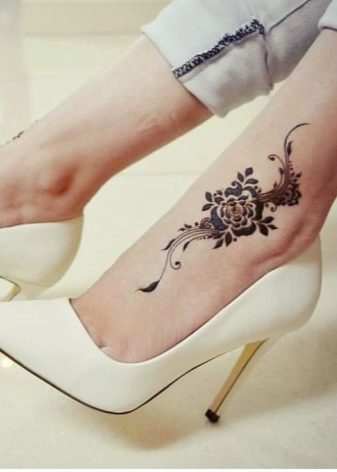
- upper leg tattoo - this is an attempt to realize your nature, true desires.
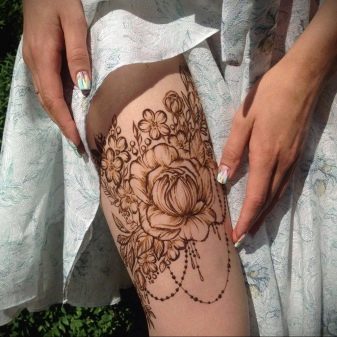
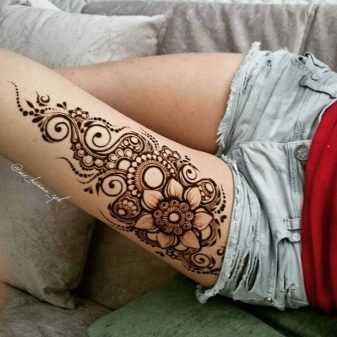
Of course, a person can do this unconsciously, not directly link the choice of a place for a tattoo with the described comments. But you can listen to them in order to better understand yourself.
To draw a henna tattoo on the leg is a beauty experiment that does not threaten with remorse and disappointment... In the overwhelming majority of cases, this experience is remembered as successful, and many beautiful photos remain as a keepsake.
